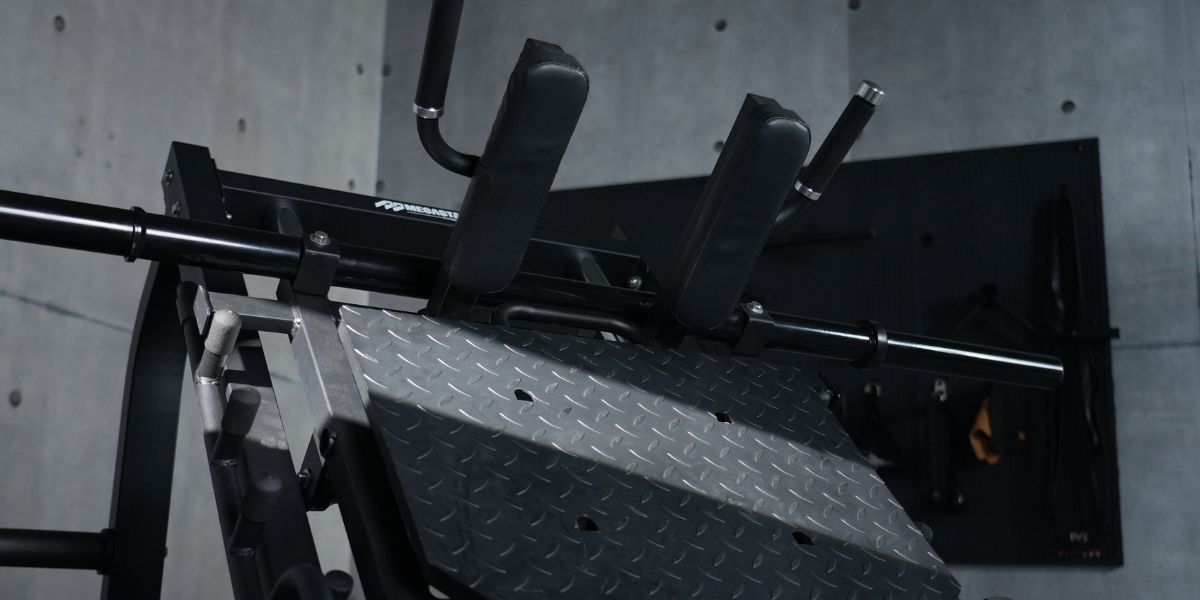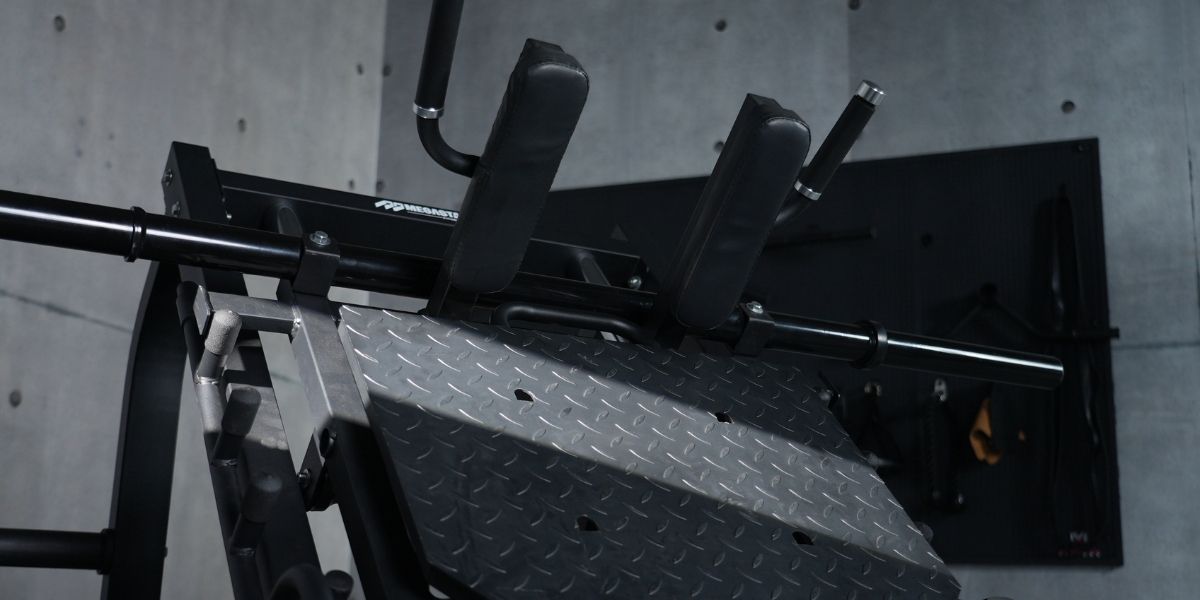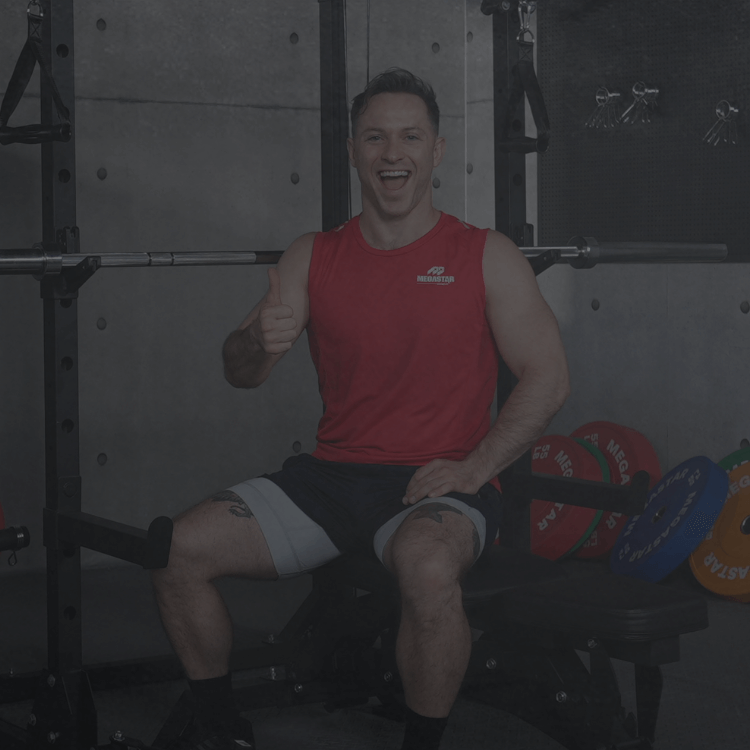Ever wonder how much a leg press actually weighs? The number on the plates is misleading. The empty starting weight alone can be 50-110 lbs on a 45° sled (or as low as 10 lbs on a cable machine). This article explains why (angle, friction) and shows you how to find your machine's true resistance, set up safely, and track your progress.
First, here's a basic "what it usually feels like" table. Use it as context, and then follow the steps in the next section to verify your own machine.
Quick Answer And Typical Starting Loads
|
Leg Press Machine Type |
What “Empty” Often Feels Like |
Why It Varies |
|
45° Plate-Loaded Sled |
~30–90 lb felt load |
Sled angle, wheel/rail friction, possible counterbalance |
|
Horizontal Selectorized |
~0–20 lb before the stack “catches” |
Low friction, some assistance at start |
|
Vertical Plate-Loaded |
~50–80 lb |
Gravity acts straight down; minimal mechanical advantage |
|
Cable/Selectorized (Pulley) |
Stack number reduced by pulley ratio (e.g., 2:1 halves it) |
Cable routing, cams, pulley ratio |
|
Hack Squat/Leg Press Combo |
~40–100+ lb felt |
Sled mass, angle, stoppers, brand differences |
“Felt load” = what your feet actually have to overcome when the machine is empty.
What Changes The Weight You Feel
So why is a 45-pound plate not always 45 pounds of resistance? It comes down to four key factors.
Machine Type and Sled Angle
This is the biggest factor.
- 45° Sled (Plate-Loaded): This is the most common type in gyms. Because the sled is on a 45-degree angle, you are not lifting the full weight against gravity. You're only lifting about 71% of the total mass (that's $\sin(45^\circ)$ for the physics fans). A 100 lb carriage only provides about 71 lbs of resistance.
- Horizontal Machine (Selectorized): On these, you're pushing the weight horizontally. Gravity isn't the main resistance; the weight stack is. These often have very low starting weights.
- Vertical Machine (Plate-Loaded): An old-school design where you lie flat on your back and push the weight straight up. Here, you are lifting 100% of the weight against gravity, making it feel much heavier.
Friction and Maintenance

Friction is the silent enemy of consistent numbers. A machine with dirty, rusty, or unlubricated guide rods will have more friction. This friction adds to the resistance you have to overcome.
A brand-new, well-oiled machine might have a true starting resistance of 60 lbs, while the exact same model that hasn't been serviced in a year might feel like 80 lbs.
Pulley and Cam Ratios
This applies to most selectorized (pin-stack) machines. They use cables, pulleys, and cams to transfer the force from the stack to your feet.
- Pulleys: Many machines use a 2:1 pulley ratio. This means that for every two inches the weight stack moves, your feet only move one inch. This gives you a mechanical advantage, and it means that 100 lbs on the stack only feels like 50 lbs at your feet.
- Cams: Some machines use an oval-shaped wheel (a cam) instead of a round pulley. This is designed to change the resistance during the rep to match your body's strength curve (i.e., making it easier at the bottom and harder at the top). This makes "the weight" even harder to calculate.
Find Your Starting Weight On Your Leg Press Machine
Don't want to guess anymore? Here are three ways to find the true starting resistance of your machine.
Fast Method: The Luggage Scale Test
This is the most practical and accurate way to find the empty "felt load" of any machine.
- Step 1: Get a digital luggage scale with a hook and a sturdy strap (like a TRX strap or a tow strap).
- Step 2: Loop the strap securely around the footplate.
- Step 3: Attach the scale and pull smoothly and slowly in the direct path of motion until the empty sled or footplate just begins to move. Note the number on the scale.
- Step 4: Repeat this three times and take the average.
Result: That average number is your machine's true starting resistance. Add this number to the plates you put on (factoring in the angle for sleds) or the stack weight (factoring in the pulley ratio) to get your real total.
Sled Estimate With Angle And Carriage
This method is for 45° plate-loaded sleds and requires a bit of math.
- Step 1: Find the Angle. Most of these machines are 45°, but some are 35° or 40°. It's often printed on the machine.
- Step 2: Find the Carriage Mass. Look for a sticker on the machine frame. Many manufacturers (like Hammer Strength or Cybex) list the weight of the empty carriage (e.g., "Carriage Weight: 75 lbs").
- Step 3: Do the Math. Multiply the carriage mass by the sine of the angle.
If the angle is 45°, multiply the carriage mass by 0.71.
If the angle is 35°, multiply the carriage mass by 0.57.
Example: Your machine's carriage weighs 100 lbs and is at a 45° angle. 100 lbs * 0.71 = 71 lbs Your starting resistance is approximately 71 lbs, plus a few pounds for friction.
Cable Machines And Pulley Ratios
This is for selectorized machines with a weight stack. You need to find the pulley ratio.
- Step 1: Get a tape measure. Place the end on the footplate.
- Step 2: Select a light weight. Push the footplate exactly 6 inches.
- Step 3: Have a friend measure how far the top of the weight stack moved.
If the stack moved 12 inches, you have a 2:1 ratio.
If the stack moved 6 inches, you have a 1:1 ratio.
Result: To find your felt load, divide the number on the stack by the first number in the ratio. For a 2:1 ratio, if you have 200 lbs selected, the felt load at your feet is 200 / 2 = 100 lbs.

Finding the Right Machine for Your Home Gym
Understanding how different machines work is key, especially if you're tired of guessing the weight at a commercial gym and want consistency at home. If you're building out your own space, you'll want a machine that is both durable and versatile.
For example, many home gym owners opt for combination machines to save space. A great option is a 2-in-1 design like the Megastar Leg Press Hack Squat Machine. This type of plate-loaded machine gives you the benefits of both a 45-degree leg press and a hack squat in a single footprint. It puts you in control of the variables, allowing you to track your progress on a consistent piece of equipment without worrying about who used it last.
Conclusion
The number on the side of the leg press is one of the biggest "vanity" numbers in the gym. It's almost meaningless. What does matter is consistency. Stop worrying about what the machine says or what the person next to you is lifting. Find the true starting resistance of your machine, log your own workouts, and focus on safely progressing your own numbers (reps and weight) on that same machine over time. That is the real secret to building stronger legs.
Frequently Asked Questions
What If The Sled Feels Sticky Or Uneven?
For home gyms: clean and lightly lube rails per the manufacturer, check wheel alignment and floor level. In a public gym, report maintenance issues to staff.
Can Leg Press Help My Squat Numbers?
It’s great for quad/hip hypertrophy and volume without axial load, but it doesn’t map 1:1 to your squat max. Use it to build muscle and capacity while tracking effort with RIR.
Why Do The Same Plates Feel Different At Another Gym?
Angle, friction, pulley or cam ratios, and any counterbalance change how much load reaches your feet. That’s why “4 plates” isn’t a universal number.







